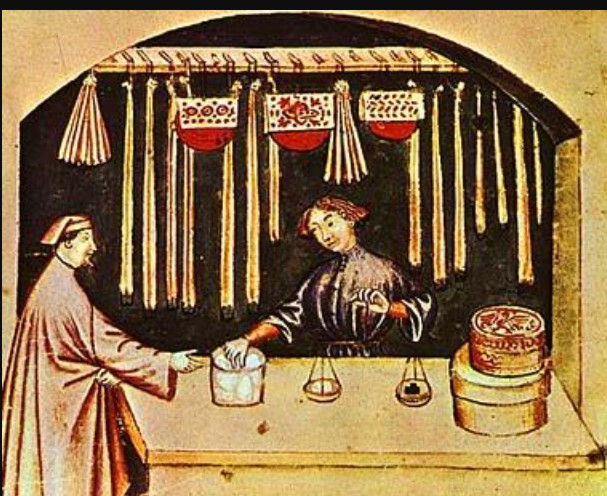A Brief History of Candles
- Winifred and Evalyn
- Oct 2
- 3 min read
We love supporting small candle makers and always look forward to unpacking new candles at the store. While we love candles year 'round illuminating the early evenings with soft light. For us, in the 21st century, candles are a treat to create an atmosphere. But for our not-so-distant (and distant!) ancestors, it was a matter of necessity and part of daily life. Candles have been around for millennia, but we got curious as we were unpacking our latest shipment of candles, so we dug up a few interesting pieces of history.
Ancient Beginnings: Candles have illuminated human life for over 5,000 years. The earliest versions weren’t the neat, fragranced tapers we know today. In Egypt around 3000 BCE, rushlights—bundles of reeds dipped in animal fat—provided short-lived light. The Romans refined the idea around 500 BCE, rolling papyrus into reeds and dipping them in tallow or beeswax. Roman candles lit homes, guided nighttime travelers, and marked religious rituals.

Across Cultures
In China, as early as 200 BCE, candles were made with whale fat. Later, they were crafted from seeds, insects, and other inventive oils.
In India, early candles were created from boiling cinnamon into wax, filling temples with both light and fragrance.
In the Middle East, beeswax became a favored material for its clean burn and subtle scent, often reserved for religious rites.
Medieval Glow: By the Middle Ages, candles had become essential. Tallow (rendered animal fat) was common, but it smoked and smelled unpleasant. Beeswax candles, on the other hand, burned with a bright, clean flame—and were so prized that they were mostly used in churches, royal courts, and wealthy homes. Candle guilds emerged in Europe, regulating production and trade as they did other crafts.

The Age of Exploration and Innovation: The 18th century brought new resources: spermaceti (a waxy substance from sperm whales) made candles harder, brighter, and less smelly. They were expensive, but revolutionary. In the 19th century, paraffin wax, distilled from petroleum, transformed the candle industry. Paraffin was cheap, abundant, and burned cleanly, making candles widely accessible.

Electric Light and a New Role: With Edison’s electric bulb in the late 19th century, candles lost their place as the world’s primary source of light. Rather than disappearing, they took on a new life. No longer necessary for survival, candles became objects of ceremony, romance, and atmosphere.
Candles Today: The 20th and 21st centuries saw a flourishing of scented candles, poured into glass, shaped into art, infused with essential oils, soy, and beeswax blends. They’re as much about mood and ritual as they are about light. Candles have returned to their most ancient role: not just illuminating the body, but the spirit. I wonder what our ancestors would have to say to that?

Symbolism Across Time
Religious: In nearly every tradition—Christianity, Judaism, Hinduism, Buddhism—candles represent the presence of the divine, remembrance, or enlightenment.
Ritual: From birthdays to vigils, we mark time, hope, and memory with a single flame.
Everyday Atmosphere: A candle on the table still has the power to turn a meal into a gathering, a room into a sanctuary.
Candles have traveled a long road; from rushlights dipped in tallow to beeswax tapers in medieval cathedrals, from whale oil innovations to today’s fragrant soy blends. And yet, across cultures and centuries, their essence hasn’t changed: they are light made intimate, fire made gentle, a flame that belongs to the home as much as the temple.
The next time you trim a wick, wait for the wax pool to form, or store a candle with care, you’re not just prolonging its life, you’re participating in a tradition as old as civilization itself. Each time you strike a match, you join generations who found meaning, comfort, and beauty in the quiet flicker of a flame.




Comments